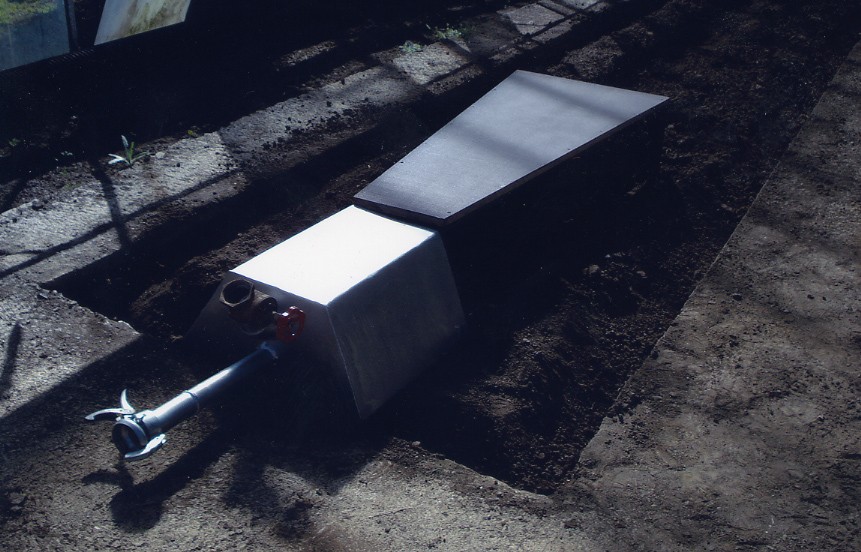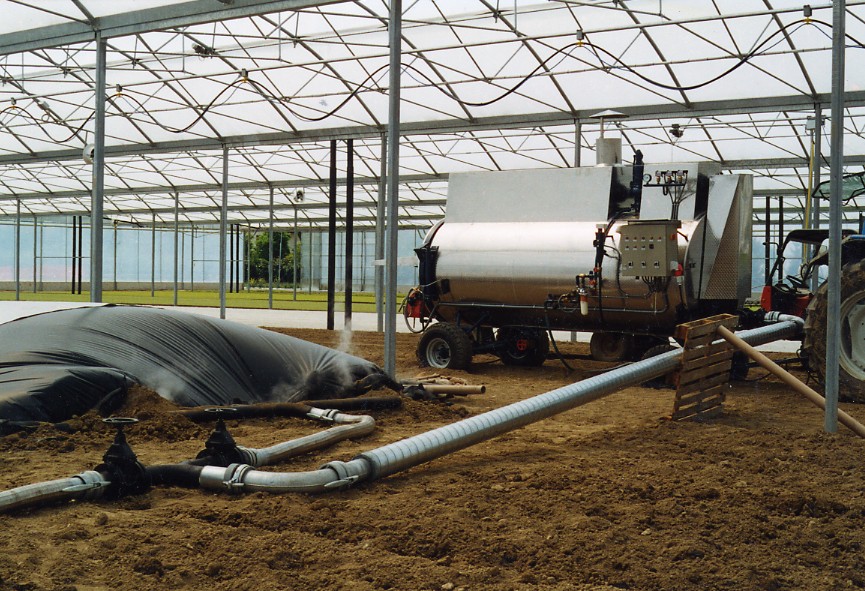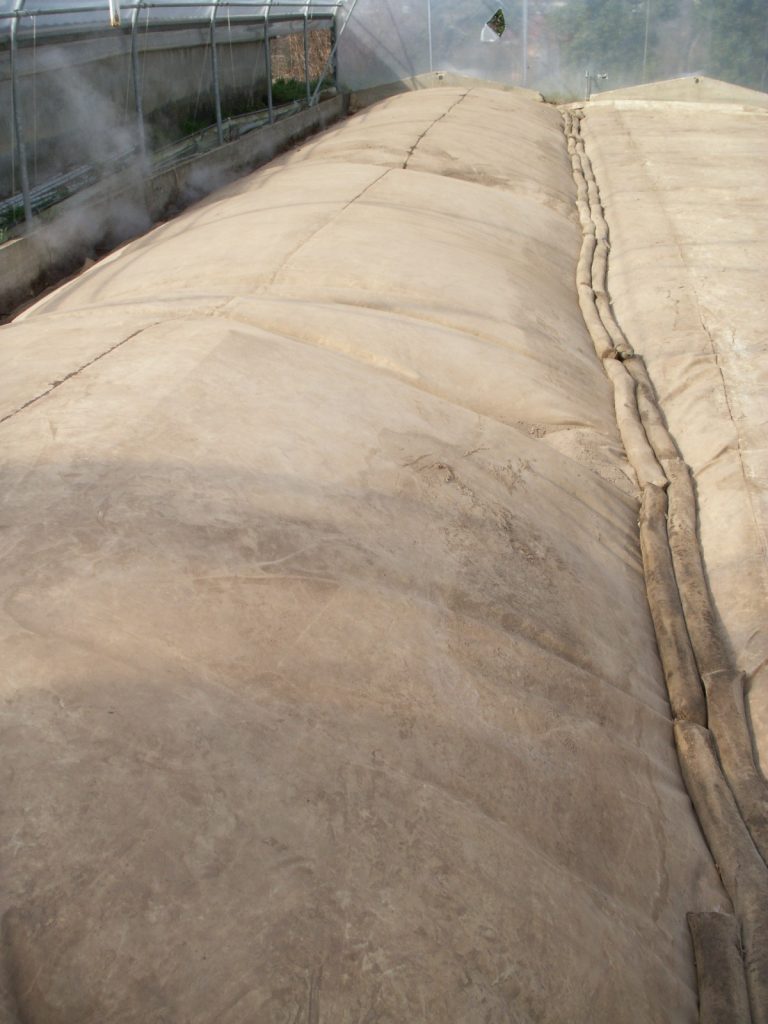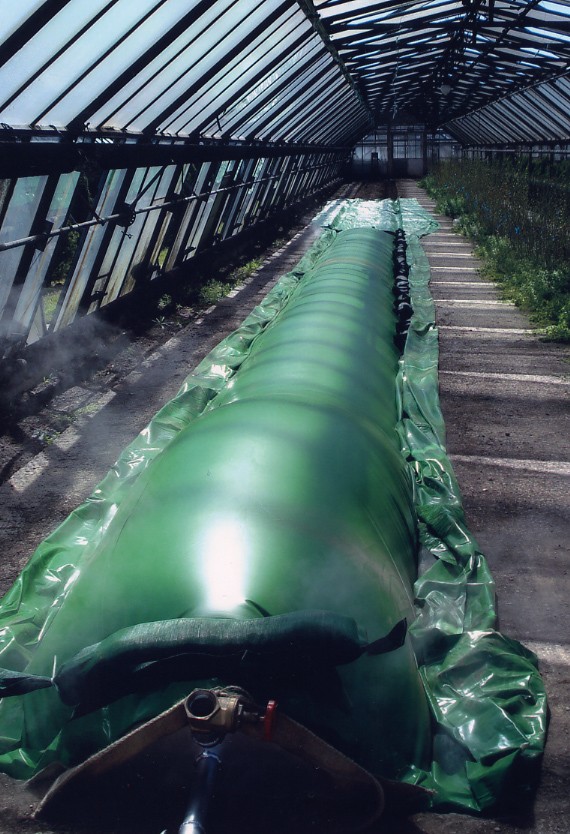Sheet Steaming
Sheet steaming was only made possible through the invention of heat resistant sheets. It facilitated prior steaming practices and was a break through for the application of hot steam since sheets are easy to handle.
The process of sheet steaming starts with the laying out of the sheets. After that sheets are weighted e.g. with sand sacks on all sides. At one opening, mostly at the front side, steam is induced underneath the sheet through a steaming injector. At the beginning steam should be mixed with air until the sheet is sufficiently inflated to save the sheet from heat damages.

When applied properly, sheet steaming is the easiest and most economic steaming method. Heat resistant and non decomposing insulation fleece may save up to 50% energy, reduces steaming time significantly and increases penetration.
Steaming areas to up to 400 m² per work step in 4-5 hours for 25-30 cm depth at 90°C can be achieved without problems.

When using heat resistant and non-decomposing synthetic insulation fleece 5 mm thick/500 gr/m ², steaming time can be reduced by about 30%.
Sufficient weighting with sand sacks Ø 10cm, or twin sacks 2 x 10cm Ø, min 10 kg/meter, are essential when steaming large areas. Sheets and fleeces have to be weighted together.
The most important premise for all steaming systems is sufficient soil loosening.
Milling is not appropriate since soil structure gets too fine and hence impenetrable for steam.

Soil loosening with spading machines is ideal, the deeper the better!
Soil structures in deeper depth should be cloddy and in lower depth granulated (superficial milling at 10 cm depth) are ideal.
An injector is used to induce the steam underneath the sheets. It is covered by a protection tunnel made of wood (20m x 30cm). When using broad sheets (over 6m) steam is induced via a distributor and 2 injectors. The application of the injector achieves a beneficial steam-air mixture to quickly inflate and protect the sheet through an air cushion. The steaming sheet has to be protected against burning with jute sacks where steam is injected.
When sheets are broader than 4m in the middle of the sheet a row of sand sacks has to be laid out, otherwise the sheet tunnel gets too high and the weight sacks at its sides slide off. The lower the sheet tunnel the better is penetration. Soil humidity is also very important. Dry soil has low thermal conductivity; hence soil should be slightly humid but not wet prior to steaming.

For bank beets or tables, sheet steaming systems are ideal. At a steam output of 6 – 7kg/m² steaming time of 2 – 3 hours are sufficient depending on soil structure, temperature and soil humidity. The quicker the air can escape to the bottom, the shorter is steaming time. When using long sheets starting from 50m length, steam injection should not take place at the front side but in the middle. However it’s better to steam the complete breadth and cut length by half.
